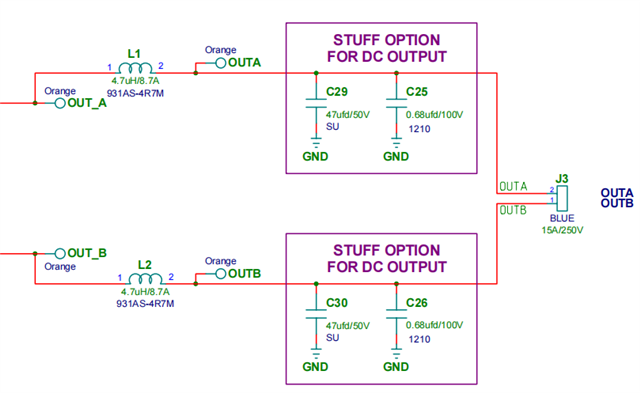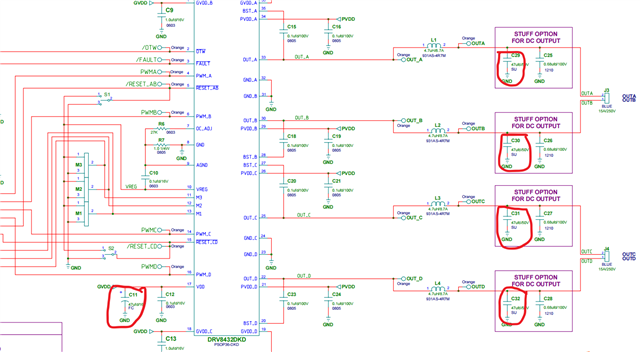Part Number: DRV8432
as title,I found TEC driver DRV8432 on your website, which can be used to drive TEC directly, now we need 4 TEC---XLT2418, they are working indepently,
now we have some questions to confirm,
1.the reference design,in 8.2.4 of datasheet,PWM_A and PWM_B are saparately connected, PWM_C and PWM_D are connected together to GND,
but OUT_A and OUT_B are connected together to TEC one side, OUT_C and OUT_D are connected together to TEC the other side.
why PWM_A and PWM_B separate? can't connect them together to MCU like PWM_C and PWM_D?
as we know, about DRV8432
a. Heating: OUTA/B voltage is higher than OUTC/D voltage.
b. Cooling: OUTC/D voltage is higher than OUTA/B voltage
so the reference design is just for cooling down, right?
2. if we want to cool down and heat the TEC, how to connect PWM_A,PWM_B,PWM_C,PWM_D?
3. can DRV8432 be used to drive TEC---XLT2418?
4.if we wanted to drive 4xTEC---XLT2418, do we need 4 DRV8432?



